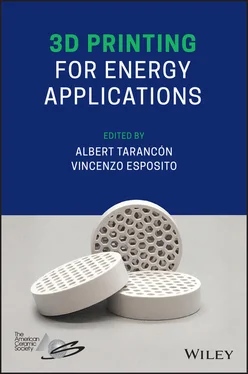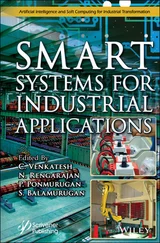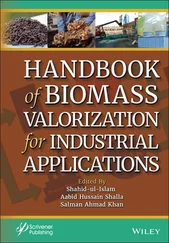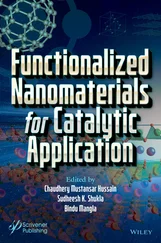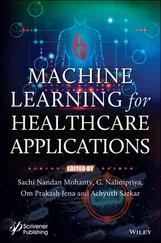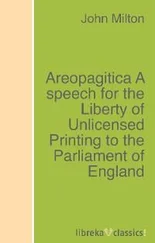23 23 Gu, D. D., Meiners, W., Wissenbach, K., & Poprawe, R. (2012). Laser additive manufacturing of metallic components: Materials, processes and mechanisms. International Materials Reviews, 57(3), 133–164. doi:10.1179/1743280411Y.0000000014
24 24 Ashby, M. F. (2006). The properties of foams and lattices. Philosophical Transactions of the Royal Society A: Mathematical, Physical and Engineering Sciences, 364(1838), 15–30. doi:10.1098/rsta.2005.1678
25 25 Simone, A. E., & Gibson, L. J. (1998). The effects of cell face curvature and corrugations on the stiffness and strength of metallic foams. Acta Materialia, 46(11), 3929–3935. doi:10.1016/S1359‐6454(98)00072‐X
26 26 Maskery, I., Aboulkhair, N. T., Aremu, A. O., Tuck, C. J., Ashcroft, I. A., Wildman, R. D., & Hague, R. J. M. (2016). A mechanical property evaluation of graded density Al‐Si10‐Mg lattice structures manufactured by selective laser melting. Materials Science and Engineering A, 670, 264–274. doi:10.1016/j.msea.2016.06.013
27 27 Choy, S. Y. S. Y., Sun, C. N. C.‐N., Leong, K. F. K. F., & Wei, J. (2017). Compressive properties of functionally graded lattice structures manufactured by selective laser melting. Materials and Design, 131(June), 112–120. doi:10.1016/j.matdes.2017.06.006
28 28 Li, S., Hassanin, H., Attallah, M. M., Adkins, N. J. E., & Essa, K. (2016). The development of TiNi‐based negative Poisson's ratio structure using selective laser melting. Acta Materialia, 105, 75–83. doi:10.1016/j.actamat.2015.12.017
29 29 Tan, C., Li, S., Essa, K., Jamshidi, P., Zhou, K., Ma, W., & Attallah, M. M. M. M. (2019). Laser powder bed fusion of Ti‐rich TiNi lattice structures: Process optimisation, geometrical integrity, and phase transformations. International Journal of Machine Tools and Manufacture, 141(January), 19–29. doi:10.1016/j.ijmachtools.2019.04.002
30 30 Carluccio, D., Demir, A. G., Bermingham, M. J., & Dargusch, M. S. (2020). Challenges and opportunities in the selective laser melting of biodegradable metals for load‐bearing bone scaffold applications. Metallurgical and Materials Transactions A: Physical Metallurgy and Materials Science, 51, 3311–3334. doi:10.1007/s11661‐020‐05796‐z
31 31 Hazlehurst, K. B., Wang, C. J., & Stanford, M. (2014). An investigation into the flexural characteristics of functionally graded cobalt chrome femoral stems manufactured using selective laser melting. Materials and Design, 60, 177–183. doi:10.1016/j.matdes.2014.03.068
32 32 Ataee, A., Li, Y., Fraser, D., Song, G., & Wen, C. (2018). Anisotropic Ti‐6Al‐4V gyroid scaffolds manufactured by electron beam melting (EBM) for bone implant applications. Materials and Design, 137, 345–354. doi:10.1016/j.matdes.2017.10.040
33 33 Yan, C., Hao, L., Hussein, A., & Young, P. (2015). Ti‐6Al‐4V triply periodic minimal surface structures for bone implants fabricated via selective laser melting. Journal of the Mechanical Behavior of Biomedical Materials, 51, 61–73. doi:10.1016/j.jmbbm.2015.06.024
34 34 Yu, S., Sun, J., & Bai, J. (2019). Investigation of functionally graded TPMS structures fabricated by additive manufacturing. Materials and Design, 182, 108021. doi:10.1016/j.matdes.2019.108021
35 35 Zhang, X.‐Y., Fang, G., Leeflang, S., Zadpoor, A. A., & Zhou, J. (2019). Topological design, permeability and mechanical behavior of additively manufactured functionally graded porous metallic biomaterials. Acta Biomaterialia, 84, 437–452. doi:10.1016/j.actbio.2018.12.013
36 36 Nadimpalli, V. K., Dahmen, T., Valente, E. H., Mohanty, S., & Pedersen, D. B. (2019, June 3–7). Multi‐material additive manufacturing of steels using laser powder bed fusion. Proceedings of the 19th International Conference and Exhibition European Society for Precision Engineering and Nanotechnology, Conference, EUSPEN 2019, Bilbao.
37 37 Chen, J., Yang, Y., Song, C., Zhang, M., Wu, S., & Wang, D. (2019). Interfacial microstructure and mechanical properties of 316L /CuSn10 multi‐material bimetallic structure fabricated by selective laser melting. Materials Science and Engineering A, 752, 75–85. doi:10.1016/j.msea.2019.02.097
38 38 Hinojos, A., Mireles, J., Reichardt, A., Frigola, P., Hosemann, P., Murr, L. E., & Wicker, R. B. (2016). Joining of Inconel 718 and 316 Stainless Steel using electron beam melting additive manufacturing technology. Materials and Design, 94, 17–27. doi:10.1016/j.matdes.2016.01.041
39 39 AlMangour, B., Grzesiak, D., & Yang, J. M. (2017). In‐situ formation of novel TiC‐particle‐reinforced 316L stainless steel bulk‐form composites by selective laser melting. Journal of Alloys and Compounds, 706, 409–418. doi:10.1016/j.jallcom.2017.01.149
40 40 Han, C., Li, Y., Wang, Q., Cai, D., Wei, Q., Yang, L., . . . Shi, Y. (2018). Titanium/hydroxyapatite (Ti/HA) gradient materials with quasi‐continuous ratios fabricated by SLM: Material interface and fracture toughness. Materials and Design, 141, 256–266. doi:10.1016/j.matdes.2017.12.037
41 41 Kun, C., Beibei, H. H., Wenheng, W., & Cailin, Z. (2017). The formation mechanism of TiC reinforcement and improved tensile strength in additive manufactured Ti matrix nanocomposite. Vacuum, 143, 23–27. doi:10.1016/j.vacuum.2017.05.029
42 42 Xia, M., Liu, A., Hou, Z., Li, N., Chen, Z., & Ding, H. (2017). Microstructure growth behavior and its evolution mechanism during laser additive manufacture of in‐situ reinforced (TiB+TiC)/Ti composite. Journal of Alloys and Compounds, 728, 436–444. doi:10.1016/j.jallcom.2017.09.033
43 43 Niendorf, T., Leuders, S., Riemer, A., Brenne, F., Tröster, T., Richard, H. A., & Schwarze, D. (2014). Functionally graded alloys obtained by additive manufacturing. Advanced Engineering Materials, 16(7), 857–861. doi:10.1002/adem.201300579
44 44 Koptyug, A., Popov, V. V., Botero Vega, C. A., Jiménez‐Piqué, E., Katz‐Demyanetz, A., Rännar, L. E., & Bäckström, M. (2020). Compositionally‐tailored steel‐based materials manufactured by electron beam melting using blended pre‐alloyed powders. Materials Science and Engineering A, 771(July 2019), 138587‐1–138587‐11. doi:10.1016/j.msea.2019.138587
45 45 Biondani, F. G., Bissacco, G., Mohanty, S., Tang, P. T., & Hansen, H. N. (2020). Multi‐metal additive manufacturing process chain for optical quality mold generation. Journal of Materials Processing Technology, 277, 116451.
46 46 Anstaett, C., Seidel, C., & Reinhart, G. (2017). Fabrication of 3D multi‐material parts using laser‐based powder bed fusion. Proceedings of the 28th Annual International Solid Freeform Fabrication Symposium.
47 47 Aerosint. (n.d.). Selective powder deposition for AM. Retrieved from https://aerosint.com/
48 48 Demir, A. G., & Previtali, B. (2017). Multi‐material selective laser melting of Fe/Al‐12Si components. Manufacturing Letters, 11, 8–11.
49 49 Wei, C., Li, L., Zhang, X., & Chueh, Y.‐H. (2018). 3D printing of multiple metallic materials via modified selective laser melting. CIRP Annals, 67(1), 245–248.
50 50 Bodner, S. C., van de Vorst, L. T. G., Zalesak, J., Todt, J., Keckes, J. F., Maier‐Kiener, V., . . . Keckes, J. (2020). Inconel‐steel multilayers by liquid dispersed metal powder bed fusion: Microstructure, residual stress and property gradients. Additive Manufacturing, 32, 101027‐1–101027‐11. doi:10.1016/j.addma.2019.101027
51 51 Wang, J., Pan, Z., Ma, Y., Lu, Y., Shen, C., Cuiuri, D., & Li, H. (2018). Characterization of wire arc additively manufactured titanium aluminide functionally graded material: Microstructure, mechanical properties and oxidation behaviour. Materials Science and Engineering A, 734, 110–119. doi:10.1016/j.msea.2018.07.097
52 52 FORCE Technology. (n.d.). Large‐scale 3D printing facility. Retrieved from https://forcetechnology.com/en/all‐industry‐facilities/large‐scale‐3d‐printing‐facility
Читать дальше
